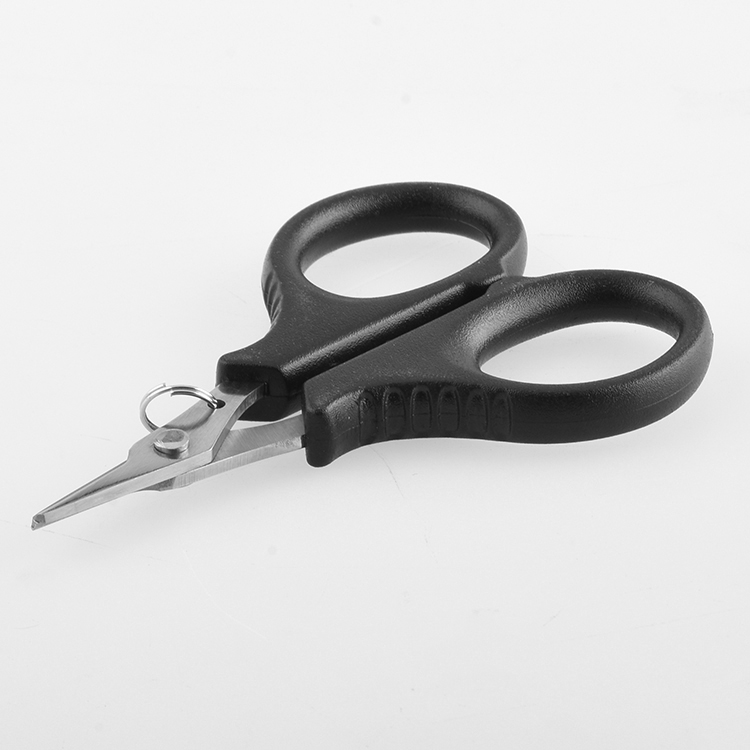
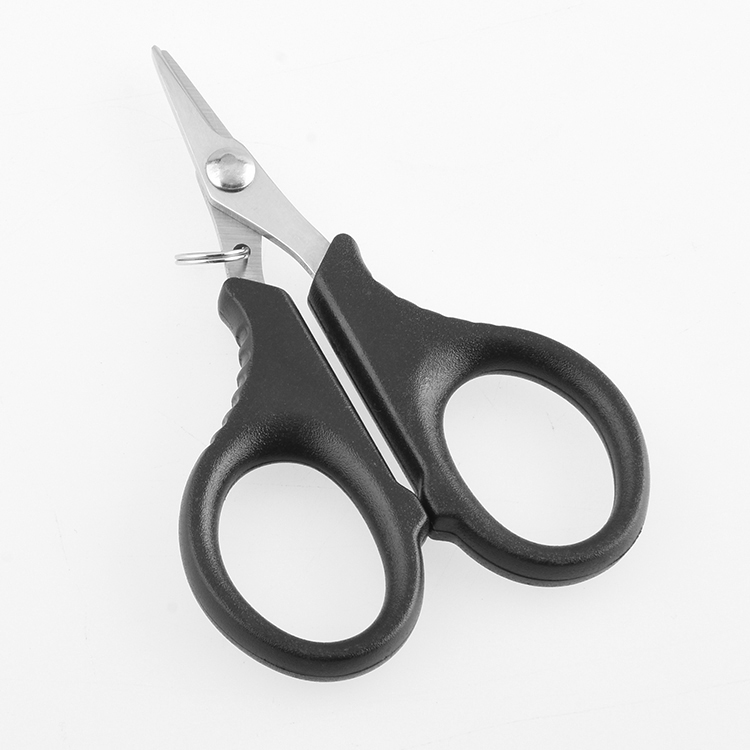
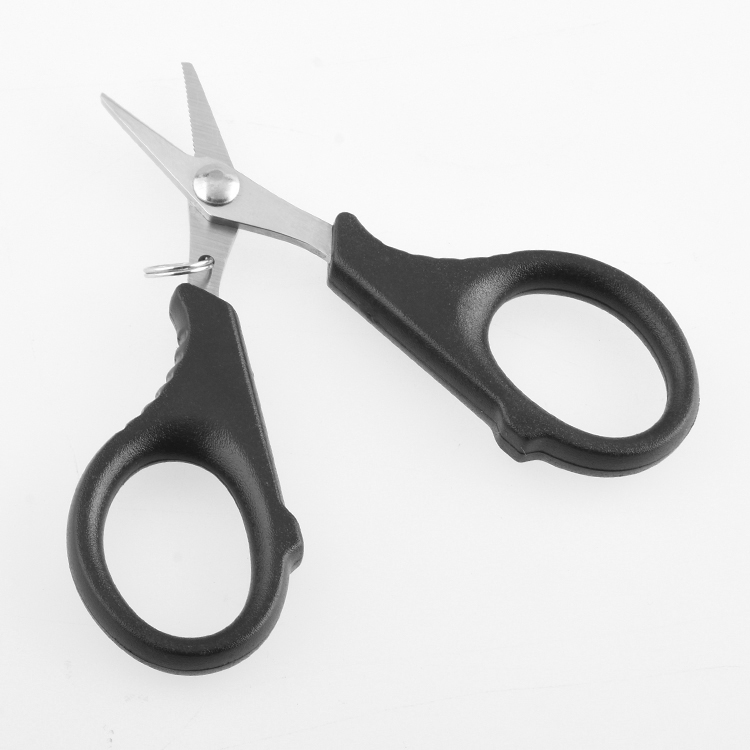
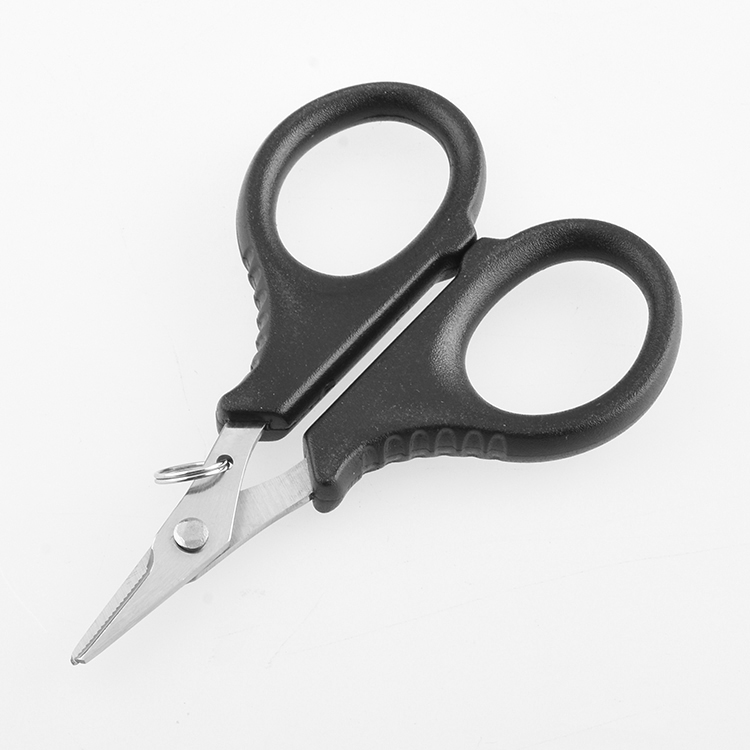
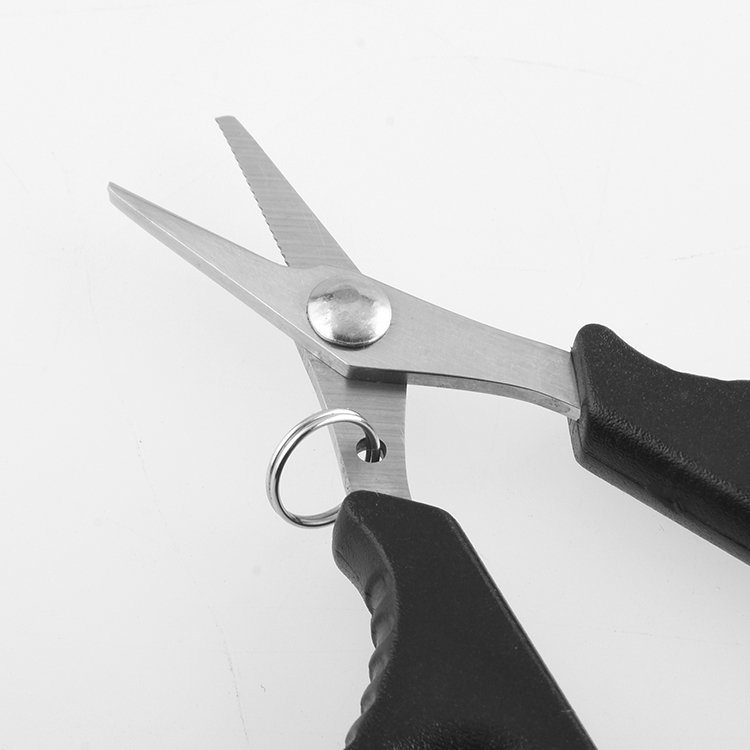
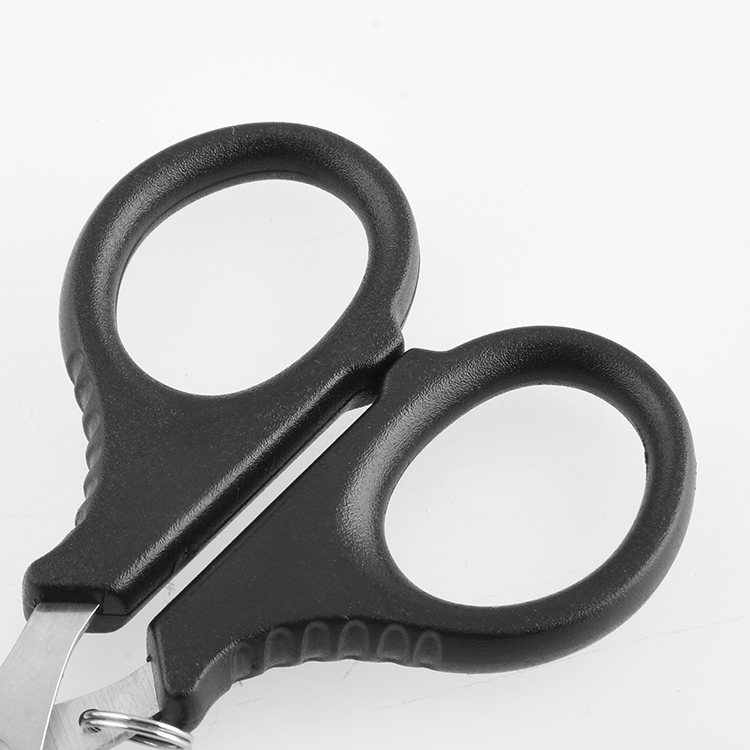
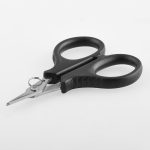
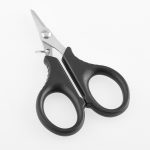
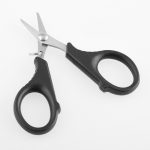
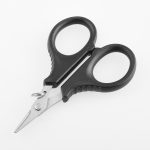
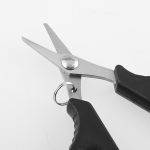
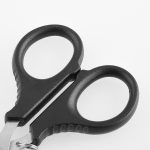
Item número.: RRH-F-310
Segmento de itens: alicate de pesca
Material do corpo principal: 2CR13
Lidar com material: abdômen
Comprimento fechado: 3,74" / 95 mm
Espessura total: 2,4”/61 mm
Altura total: 0,08”/2mm
Comprimento da lâmina: 1.3” / 33mm
Peso: 0.65 oz / 18.5g
Lidar com cor: Preto
Acabamento do corpo principal: Cetim
Lidar com acabamento: abdômen
MOQ regular: 3000
In the world of angling where the right tool can make all the difference, the RRH-F-310 OEM fishing pliers from Shieldon emerge as a dynamic accessory for fishing enthusiasts. Within this narrative, we will delve into the essential characteristics of these carefully designed fishing pliers, emphasizing their precision, ergonomics, and durability. Crafted for convenience and effectiveness, the RRH-F-310 is a testament to Shieldon’s dedication to providing fishermen with superior quality tools that enhance their craft.
Precision Engineered for the Avid Angler
The RRH-F-310 fishing pliers speak volumes of Shieldon’s engineering prowess. Specifically tailored for the fishing aficionado, these pliers encapsulate the essence of functionality in a small package. At a mere 3.74 inches when closed, and weighing only 0.65 ounces, they are the epitome of portable precision.
Detailed Product Specifications:
Purpose-Built for Performance and Portability
With a focus on the unique requirements of fishing, the RRH-F-310’s main body is crafted from 2CR13 stainless steel. This material is not only hardy but also provides excellent corrosion resistance, an absolute necessity in the damp conditions synonymous with fishing. The satin finish on the main body not only adds to its aesthetic appeal but also serves a practical purpose, reducing glare from the sun, which can be a distraction during critical moments.
Ergonomic and Efficient
The ABS handle of the RRH-F-310 is designed to marry form with function. It offers a non-slip grip even when wet, allowing the angler to work with confidence. The black color is not just for style; it helps mask dirt and fish stains, keeping your pliers looking presentable even after repeated use.
Compact Dimension, Comprehensive Capabilities
The size of the RRH-F-310 is one of its most striking features. The small design does not compromise on the tool’s capability – it is perfectly calibrated for cutting through fishing line, crimping lead, and removing hooks. The 1.3-inch blade is sharp and precise, capable of snipping even the most stubborn braided lines.
Featherlight and Always Ready
The ultralight weight of the RRH-F-310 fishing pliers ensures they can be carried all day without any discomfort, making them ideal for those long fishing trips where every ounce counts. Whether clipped to a belt or tucked into a pocket, these pliers are always within reach when you need them.
Designed for the Demanding Environment of Fishing
The demands of the fishing environment are unique, and the RRH-F-310 is built to meet them head-on. From freshwater streams to the open sea, these pliers possess the resilience to withstand the diverse challenges posed by different fishing scenarios.
Ideal for Bulk Orders
With a regular MOQ of 3000, the RRH-F-310 fishing pliers are an excellent choice for retailers looking to stock high-quality, reliable fishing tools. They are equally suitable for fishing schools, charter services, and promotional items, offering a practical tool that anglers will appreciate and use regularly.
The Perfect Blend of Style and Substance
The RRH-F-310 is a blend of style and substance, a tool designed not just to look good but to perform under pressure. The sleek satin finish of the main body combined with the robust black ABS handle creates a plier that is as beautiful as it is functional.
Conclusão
The RRH-F-310 fishing pliers from Shieldon are more than just a tool; they are a compact powerhouse of functionality, ready to tackle the rigors of angling with grace and efficiency. These pliers encapsulate the spirit of the fisherman – resilient, adaptable, and precise. Shieldon understands that the right tool can make all the difference when the catch of the day is on the line, and the RRH-F-310 is poised to be that critical difference, solidifying its place as an essential element of any angler’s gear.
Fishing pliers are as essential to an angler’s toolkit as hooks are to fishing lines. Yet, their structure and multifunctionality are often overlooked by many enthusiasts. In this guide, you’ll receive a comprehensive understanding of the anatomy of fishing pliers, empowering you with the basic knowledge to utilize this indispensable tool to its fullest capability.
Introduction to Fishing Pliers
Fishing pliers are specialized tools designed for various tasks associated with fishing, such as cutting line, removing hooks, and crimping leads. Unlike regular pliers, they are specifically tailored to meet the complex needs of anglers, often facing the harsh conditions of marine environments. Their structure reflects this specialized purpose, featuring materials and designs that resist corrosion and provide multiple functions within a single tool.
Core Components of Fishing Pliers
Jaws: The jaws are the most recognizable part of fishing pliers. They are usually narrow and elongated, allowing them to reach into the mouth of a fish to remove a hook with minimal harm. Some jaws come with serrations or grooves, which provide a better grip on slippery objects such as fishhooks or line.
Cutters: Incorporated into the jaws are the cutters, which can be found either at the base of the jaws or on the sides. They are indispensable for cutting through different types of fishing line, including the tough, braided varieties. High-quality pliers will have replaceable cutter blades made from materials like tungsten carbide, which maintain sharpness and durability.
Crimpers: Often nestled between the jaws are crimping tools, which are used to crimp fishing leads or sleeves. This allows for the making of secure connections when rigging lines without the need for knots, which can weaken the line.
Grips: The handles or grips are where you’ll exert pressure to operate the pliers. Ergonomically designed grips made from materials like rubber or specially formulated plastics provide comfort and prevent slipping when your hands are wet.
Spring-loaded Mechanism: Most fishing pliers are spring-loaded, meaning they automatically open when pressure is released. This feature is particularly useful when you need to operate the pliers with one hand while managing a fish or a fishing rod with the other.
Nose Length: The nose or ‘needle-nose’ length varies, with longer noses suited for deep-mouthed fish and shorter noses for general use. The length of the nose is an important consideration depending on the type of fishing you’re engaged in.
Split Ring Tool: Some fishing pliers include a split ring tool, which is a small projection used to open split rings when changing or attaching hooks to lures.
Construction Material: Perhaps the most critical aspect of the structure of fishing pliers is the material they are made of. Stainless steel is a common choice for its strength and corrosion resistance. Some models are coated with a protective layer such as titanium or nickel for added durability against saltwater.
Size and Weight: The overall size and weight of fishing pliers are designed for portability and ease of use. Lightweight yet sturdy pliers are ideal for long fishing trips and can be easily attached to a fishing vest or belt.
Conclusão
Understanding the structure of fishing pliers enhances your fishing experience by enabling you to select the right tool for your needs and use it effectively. Whether you’re an amateur or a seasoned angler, familiarizing yourself with the anatomy of these pliers – from the jaws to the grips, and from the cutters to the materials – can empower you to perform fishing-related tasks with precision and ease. Remember, in the world of angling, the right knowledge of your tools can be just as crucial as the right technique.
Estamos prontos para ajudar em qualquer estágio do seu projeto de faca OEM. Envie-nos sua dúvida e seu orçamento e entraremos em contato dentro de 24 horas.